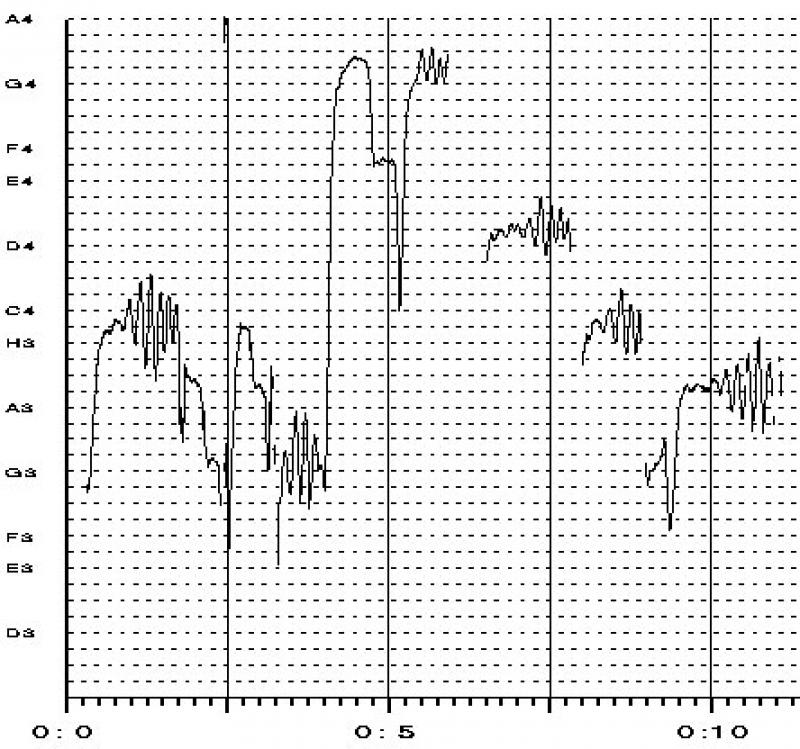Pitchtracker

Description
Pitchtracker reads an audio file of arbitrary length and produces a PostScript document with precise graphs for the fundamental frequency. The program can only analyze monophonic audio sources.
How is the program useful?
In musicological context, it is often interesting to find fundamental frequencies with great accuracy and to produce publishable graphs. Analysis of intonation, microtonality, vibrato and other ornamentations requires data with higher resolution than you typically get from commercial pitchtrackers. With our program you can easily see the rapid variations in pitch down to a few cents.
The figure below shows a typical graph produced by Pitchtracker – a 15-second analysis of a woman singing. Each horizontal dotted line corresponds to one quarter tone. Note the use of vibrato, and how individual notes start with upward glissandos.
How does the program work?
We have developed our own algorithm for accurate pitch tracking. Although this algorithm is simple and relatively primitive, it turns out to be both robust, fast and precise. In particular, it works well for vocals.
The algorithm is based on a phase vocoder which through an FFT estimates the accurate frequency for the partial located within each analysis channel, approx. 40 times a second (the phase vocoder fails if several partials falls within the same channel). The challenge is then to decide which partial is the fundamental. First, we search for the strongest partial. This often happens to be the fundamental, but it could also be the first or the second harmonic. Therefore, we also check if there is concentrated energy around half, a third, or 2/3 of the frequency of the strongest partial, and if so, the lower partial is chosen.
Credits
Pitchtracker is designed and programmed by Øyvind Hammer.